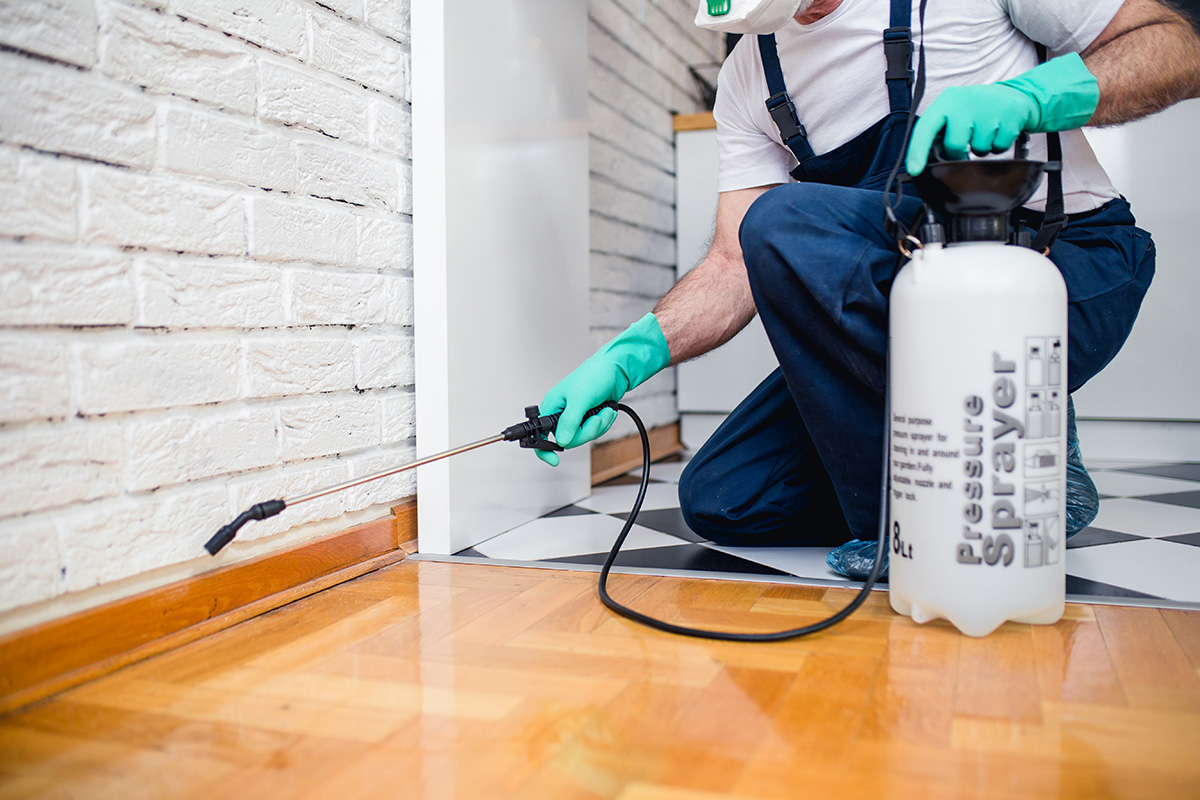Experienced A1 Exterminators Charlotte NC - Quick and Dependable Solutions
Experienced A1 Exterminators Charlotte NC - Quick and Dependable Solutions
Blog Article
Bed Insect Therapy Failure: Comparing Chemical Vs. Non-Chemical Solutions
In the world of insect control, specifically when managing the consistent problem of bed pests, the selection in between chemical and non-chemical therapy solutions can be an essential one. Both methods provide unique benefits and downsides, influencing aspects such as effectiveness, security factors to consider, and total expense. By analyzing the nuanced information of each method, a more clear understanding of which course to pursue in attending to a bed pest invasion can be achieved.
Efficiency of Chemical Therapies
Chemical therapies for bed bug invasions have actually been extensively acknowledged for their fast and potent efficiency in getting rid of these bugs. When thinking about the performance of chemical therapies, it is important to understand that they can give a thorough and fast service to a bed pest issue.
Furthermore, chemical therapies have the advantage of offering recurring results, indicating that they can remain to eliminate bed bugs even after the first application. This recurring action is especially helpful in combating any kind of possible re-infestations. Furthermore, the quick activity of chemical therapies can bring relief to people facing extreme bed bug invasions, enabling them to reclaim control of their home quickly.
Safety And Security Worry About Chemical Solutions
One important element that calls for mindful factor to consider when utilizing chemical options for bed pest therapy is making sure the safety and security of occupants and the atmosphere. While chemical therapies can be reliable in eradicating bed bugs, they may present threats otherwise taken care of effectively. Among the main safety worry about chemical solutions is the potential injury they can cause to human health. Exposure to certain chemicals used in bed bug treatments can result in breathing issues, skin inflammation, or other damaging responses, specifically in people with pre-existing conditions or sensitivities. Furthermore, incorrect application or dose of chemical pesticides can lead to harmful residues lingering in the treated area, posturing long-term wellness risks to owners.
In addition, the ecological impact of chemical remedies is one more significant factor to consider. Some pesticides utilized in bed pest treatments may be hazardous to advantageous pests, wildlife, and ecosystems if they leach right into the dirt or water systems. It is essential to make use of chemical treatments judiciously, adhering to security guidelines, and thinking about much less hazardous options to alleviate these threats and guarantee the risk-free and reliable management of bed insect problems.
Benefits of Non-Chemical Techniques
Thinking about the prospective safety and security issues and ecological effect associated with chemical services for bed insect treatment, checking out non-chemical techniques provides an appealing choice with numerous distinctive benefits. Non-chemical therapies are ecologically friendly, as they do not contribute to air or water pollution, making them a sustainable option for pest control.
Furthermore, non-chemical solutions have a peek here can be efficient in targeting bed bugs, consisting of hard-to-reach areas where chemical therapies may not pass through - A1 charlotte pest control companies. Techniques such as heat therapy, vacuuming, heavy steam cleaning, and mattress encasements offer thorough removal without the usage of damaging chemicals.
Limitations of Non-Chemical Treatments

Furthermore, non-chemical therapies commonly call for numerous applications to accomplish successful removal. This can be lengthy and might not constantly guarantee total removal of all bed pests and their eggs, especially in covert or hard-to-reach locations.
Moreover, the success of non-chemical therapies heavily relies on appropriate implementation and thoroughness, which can be testing for individuals without expert proficiency. Poor application of non-chemical methods may result in insufficient eradication, leading to consistent invasions and the demand for additional therapies.
As a result, while non-chemical therapies have their benefits, it is vital to acknowledge these restrictions and consider them when figuring out the most reliable method for handling bed pest problems.
Price Comparison: Chemical Vs. Non-Chemical Options
Provided the limitations connected with non-chemical therapies, a crucial facet to review in the context of bed pest management is the cost contrast between chemical and non-chemical choices. In comparison, non-chemical therapies like warm therapy or steam can be more costly, with costs varying from $1,000 to $6,000 for an entire home. While the preliminary cost of chemical treatments might seem reduced, several therapies might be required to totally browse around here get rid of the infestation, possibly raising the general price.
Conclusion

Considering the potential security concerns and environmental influence associated with chemical remedies for bed insect therapy, checking out non-chemical strategies provides a promising alternative with numerous unique advantages.Offered the limitations associated with non-chemical treatments, a crucial element to evaluate in the context of bed pest monitoring is the price contrast in between chemical and non-chemical options. In comparison, non-chemical treatments like warm treatment or heavy steam can be much more pricey, with expenses varying from $1,000 to $6,000 for an entire home. While the first expense of chemical treatments might appear reduced, several treatments might be called for to fully get rid of the invasion, potentially boosting the total cost.In verdict, when contrasting chemical and non-chemical bed insect treatment alternatives, it is vital to take into consideration efficiency, safety and security, benefits, constraints, and expense.
Report this page